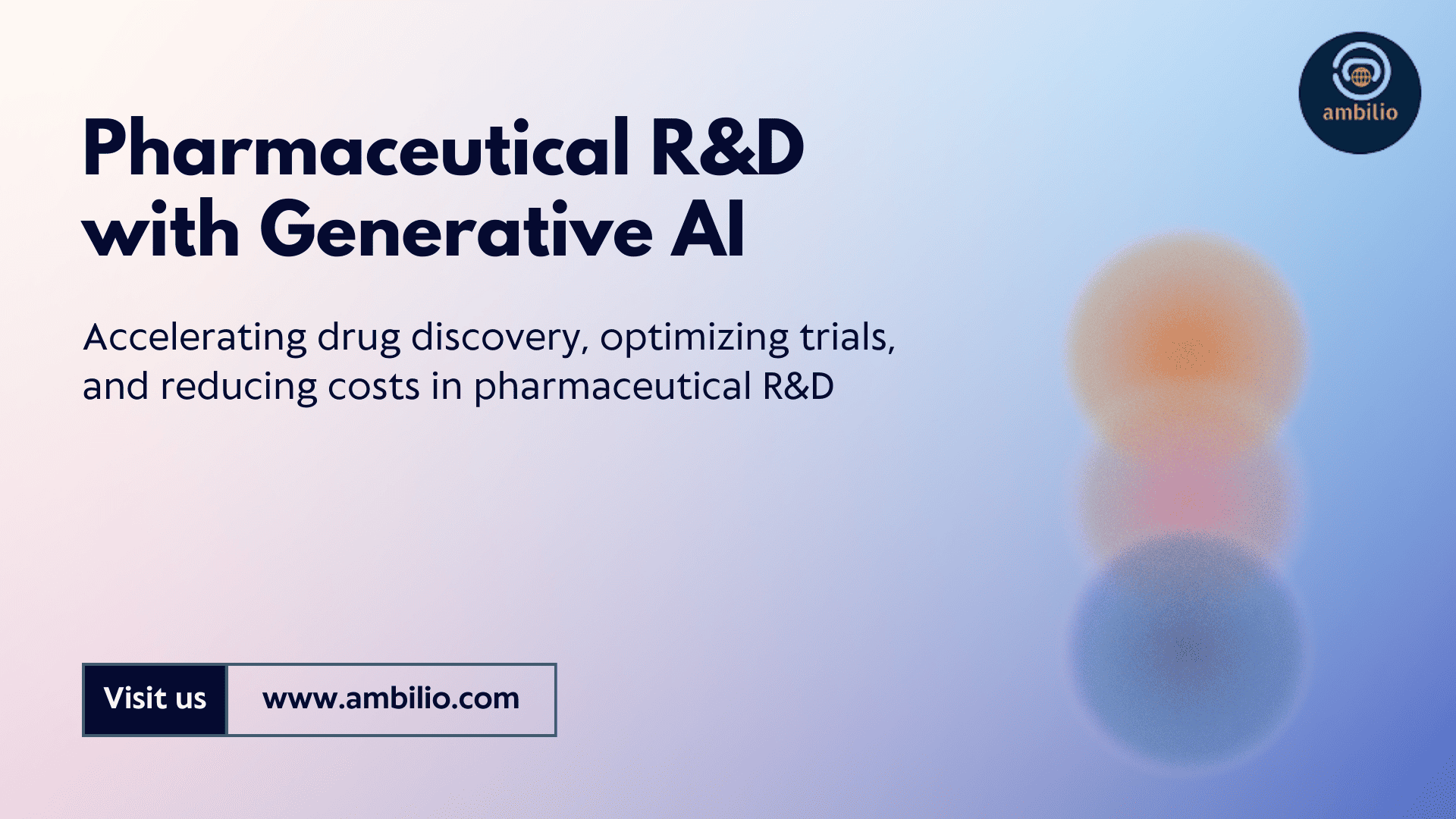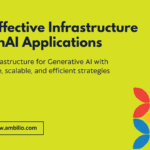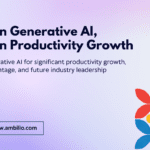Pharmaceutical research and development (R&D) is a complex and costly process. It typically takes over a decade and billions of dollars to bring a new drug to market. As the industry faces these challenges, Generative AI has emerged as a transformative tool. Pharmaceutical R&D with Generative AI offers the potential to streamline processes, reduce costs, and accelerate the development of new therapies. Here’s an in-depth look at how Generative AI is reshaping the pharmaceutical landscape and driving significant value.
Understanding the Challenges in Pharmaceutical R&D
The traditional pharmaceutical R&D process is characterized by high costs and lengthy timelines. Developing a new drug involves several stages, including discovery, preclinical testing, clinical trials, and regulatory approval. Each stage is fraught with challenges:
- High Costs: The average cost of developing a new drug exceeds $2 billion. This includes expenses for research, development, clinical trials, and regulatory compliance.
- Long Timelines: The drug development process often spans more than a decade. This lengthy timeline is due to rigorous testing and regulatory scrutiny.
- High Failure Rate: Only about 12% of drugs that enter clinical trials receive approval, contributing to the high cost of R&D.
Given these challenges, the pharmaceutical industry is in urgent need of innovative solutions to enhance efficiency and reduce costs.
The Role of Generative AI in Pharmaceutical R&D
Generative AI, a subset of artificial intelligence, leverages machine learning algorithms to generate new data and solutions based on learned patterns. In pharmaceutical R&D, generative AI offers several key advantages:
- Accelerating Drug DiscoveryOne of the most significant applications of generative AI in pharmaceutical R&D is accelerating drug discovery. Traditional methods involve synthesizing and testing a vast number of compounds to identify potential drug candidates. Generative AI can streamline this process by:
- Generating Novel Molecules: Generative AI models are trained on extensive databases of chemical compounds. They learn the underlying patterns and rules of chemistry to generate novel molecular structures with specific properties. For example, researchers at MIT and Harvard have used generative models to design thousands of new molecules in hours, significantly speeding up the discovery phase.
- Optimizing Properties: AI models can generate molecules optimized for desired properties such as target protein binding, oral bioavailability, and metabolic stability. This targeted approach helps researchers focus on the most promising candidates.
- Predicting Protein Structures and InteractionsPredicting protein structures and interactions is crucial for drug development. Accurate protein structure prediction helps in understanding disease mechanisms and designing targeted therapies. Generative AI enhances this process by:
- Predicting 3D Protein Structures: Google’s AlphaFold has set new standards in predicting protein folding from amino acid sequences. This capability provides valuable insights into protein structures, aiding drug design.
- Modeling Protein-Ligand Interactions: Generative AI models can predict how different molecules interact with target proteins. By analyzing datasets of protein-ligand interactions, AI can identify potential drug candidates more efficiently, reducing the need for extensive lab testing.
- Optimizing Lead CompoundsOnce promising drug candidates are identified, generative AI can assist in optimizing their properties. This optimization is critical for improving efficacy and minimizing side effects. Key contributions include:
- Enhancing Structure-Activity Relationships: AI models analyze the relationship between a compound’s structure and its biological activity. They suggest modifications to improve potency and selectivity, leading to more effective drugs. For example, AstraZeneca used generative models to optimize kinase inhibitors, resulting in compounds with enhanced properties.
- Iterative Optimization: Generative AI enables rapid and systematic modifications to lead compounds, accelerating the optimization process compared to traditional methods.
- Designing Smarter Clinical TrialsClinical trials are a crucial but costly and time-consuming part of drug development. Generative AI can improve clinical trial design and execution by:
- Identifying Optimal Patient Populations: AI models analyze real-world data to identify suitable patient populations and biomarkers. This helps design trials that are more targeted and efficient.
- Optimizing Trial Designs: Generative AI can suggest more effective trial protocols by analyzing historical data. This includes optimizing dosage, endpoints, and patient selection.
- Synthetic Control Arms: AI can generate synthetic patient data to create control groups, potentially reducing the number of participants needed for placebo groups. This approach can lead to smaller, more efficient trials without compromising statistical power.
Addressing Challenges in Generative AI Integration
While generative AI holds immense potential, its integration into pharmaceutical R&D comes with challenges:
- Data Quality and Availability: AI models require high-quality, diverse datasets. Ensuring access to comprehensive and representative data while protecting patient privacy is essential.
- Interpretability and Explainability: Many AI models operate as “black boxes,” making it difficult to understand their decision-making processes. Improving the interpretability of AI-generated results is crucial for regulatory approval and scientific validation.
- Validation and Testing: AI-generated drug candidates and trial designs need rigorous experimental validation. Developing efficient workflows for testing and iterating on AI suggestions is important.
- Regulatory Considerations: As AI becomes central to drug development, regulatory frameworks must evolve to ensure safety and efficacy while promoting innovation.
- Ethical Considerations: Ethical concerns such as algorithmic bias and fairness need to be addressed to ensure responsible AI use in healthcare.
The Future of Pharmaceutical R&D with Generative AI
Pharmaceutical R&D with Generative AI is set to transform the industry by enhancing drug discovery, optimizing clinical trials, and reducing development costs. As AI models continue to evolve, their integration into R&D processes will likely become more seamless and impactful.
The future of pharmaceutical R&D holds promise for faster discovery of breakthrough therapies, more personalized treatments, and improved patient outcomes. Generative AI will not replace human scientists but will serve as a powerful tool to augment and accelerate their work. By embracing these technologies, the pharmaceutical industry can look forward to a new era of drug development, where innovation is driven by the power of AI.



